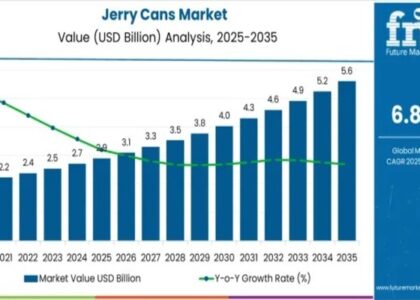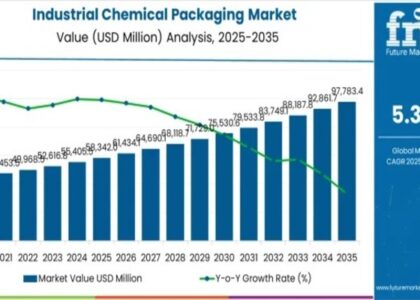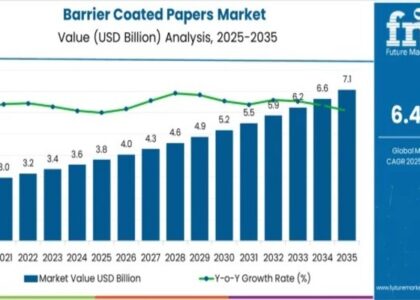The automotive natural gas vehicle (NGV) market remains in its infant stage, despite sales growth in the last three to four years. The automotive natural gas vehicle market is expected to grow at a CAGR of 7% between 2022 and 2032.
The automotive natural gas vehicle (NGV) market refers to vehicles that utilize natural gas, either compressed natural gas (CNG) or liquefied natural gas (LNG), as a fuel source. Here’s an overview of key aspects of this market:
- Types of NGVs: NGVs can include passenger cars, buses, trucks, and commercial vehicles that are powered by natural gas. They can be dedicated NGVs, which solely run on natural gas, or bi-fuel vehicles, which can switch between natural gas and gasoline/diesel.
- Market Segmentation: The NGV market can be segmented based on vehicle type, fuel type (CNG or LNG), application (personal, commercial, public transportation), and geography (regions or countries with varying levels of NGV adoption).
- Market Size and Growth: The NGV market size varies by region, influenced by factors such as government policies promoting alternative fuels, environmental regulations, availability of natural gas infrastructure, and consumer preferences. While still a relatively small segment compared to traditional gasoline and diesel vehicles, the NGV market has been experiencing steady growth, driven by increasing awareness of environmental issues and the benefits of natural gas as a cleaner alternative fuel.
- Key Players: Major automakers and manufacturers in the NGV market include companies such as Honda, Toyota, Volvo, Scania, Iveco, and Cummins, among others. These companies produce NGV models or offer conversions for existing vehicles to run on natural gas.
- Technological Trends: Technological advancements in NGV technology focus on improving fuel efficiency, extending vehicle range, reducing emissions, and enhancing safety. This includes advancements in engine design, fuel storage systems, onboard diagnostics, and integration with hybrid and electric vehicle technologies.
Gain expert insights and supercharge your growth strategies. Request our market overview sample:
https://www.futuremarketinsights.com/reports/sample/rep-gb-530
Automotive Natural Gas Vehicle Industry’s Obstacles
Electric vehicles are gaining popularity in Europe and Asia-Pacific, posing a significant challenge to the automotive natural gas vehicle market expansion in these regions.
Due to their low operating and maintenance costs, electric vehicles help to shift consumer focus away from natural gas-powered vehicles and toward electric vehicles. This is now a significant impediment to the automotive natural gas vehicle market. The disruption in the mining and supply chain of natural gas caused by social issues such as riots and war in reserve lands creates a barrier to the automotive natural gas vehicle market growth.
Analyzing Demand for Automotive Natural Gas Vehicles from Asia Pacific
The Asia Pacific automotive natural gas vehicle market is expanding due to the province’s increased production and sales of passenger cars. Due to the development of natural gas infrastructure in countries, China is recognized as the largest adopter of NGVs.
China is expected to increase CNG and LNG usage due to massive infrastructure growth, and natural gas may help operators reduce operating costs. The government’s numerous incentives to encourage the use of natural gas serve as primary drivers of automotive natural gas vehicle market growth.
Request for Customization:
https://www.futuremarketinsights.com/customization-available/rep-gb-530
Tracking the Consumption of Automotive Natural Gas Vehicles in United States
Natural gas is readily available in the United States, and the region is the world’s lowest-cost manufacturer. As a result, it opens up many automotive natural gas vehicle market growth opportunities. Furthermore, increased shale gas extraction across the United States has increased the natural gas supply.
Key Takeaways:
- The Asia Pacific region accounted for more than 55% of the automotive natural gas vehicle market and is expected to maintain its lead with a significant CAGR.
- China accounted for nearly a quarter of APAC passenger car sales.
- The European automotive natural gas vehicle market is expected to grow throughout the forecast period.
- Natural gas is abundant in the United States, and the country is the world’s lowest-cost producer.
Competitive Landscape:
Ford Motor Company, Hondo Motor Company, Volkswagen, and Hyundai Motor Corp are the key participants in the global demand for automotive natural gas vehicles.
Companies emphasize providing technologically driven and advanced products to enhance their market offerings. To expand in the automotive natural gas vehicle market, the companies are also pursuing strategic initiatives such as regional expansions, acquisitions, mergers, partnerships, and collaborations.
Ask the Analyst:
https://www.futuremarketinsights.com/ask-question/rep-gb-530
Key Segments Covered in the Automotive Natural Gas Vehicles Market Report
Fuel Type:
- Compressed Natural Gas (CNG)
- Liquefied Natural Gas (LNG)
Vehicle Type:
- Passenger Vehicles
- Commercial Vehicles
Region:
- North America
- Latin America
- Western Europe
- Eastern Europe
- APEJ
- Japan
- Middle East & Africa
Author
Nikhil Kaitwade (Associate Vice President at Future Market Insights, Inc.) has over a decade of experience in market research and business consulting. He has successfully delivered 1500+ client assignments, predominantly in Automotive, Chemicals, Industrial Equipment, Oil & Gas, and Service industries.
His core competency circles around developing research methodology, creating a unique analysis framework, statistical data models for pricing analysis, competition mapping, and market feasibility analysis. His expertise also extends wide and beyond analysis, advising clients on identifying growth potential in established and niche market segments, investment/divestment decisions, and market entry decision-making.
Nikhil holds an MBA degree in Marketing and IT and a Graduate in Mechanical Engineering. Nikhil has authored several publications and quoted in journals like EMS Now, EPR Magazine, and EE Times.
About Future Market Insights (FMI)
Future Market Insights, Inc. (ESOMAR certified, recipient of the Stevie Award, and a member of the Greater New York Chamber of Commerce) offers profound insights into the driving factors that are boosting demand in the market. FMI stands as the leading global provider of market intelligence, advisory services, consulting, and events for the Packaging, Food and Beverage, Consumer, Technology, Healthcare, Industrial, and Chemicals markets. With a vast team of over 5000 analysts worldwide, FMI provides global, regional, and local expertise on diverse domains and industry trends across more than 110 countries.
Contact Us:
Future Market Insights Inc.
Christiana Corporate, 200 Continental Drive,
Suite 401, Newark, Delaware – 19713, USA
T: +1-845-579-5705
For Sales Enquiries: sales@futuremarketinsights.com
Website: https://www.futuremarketinsights.com
LinkedIn| Twitter| Blogs | YouTube





